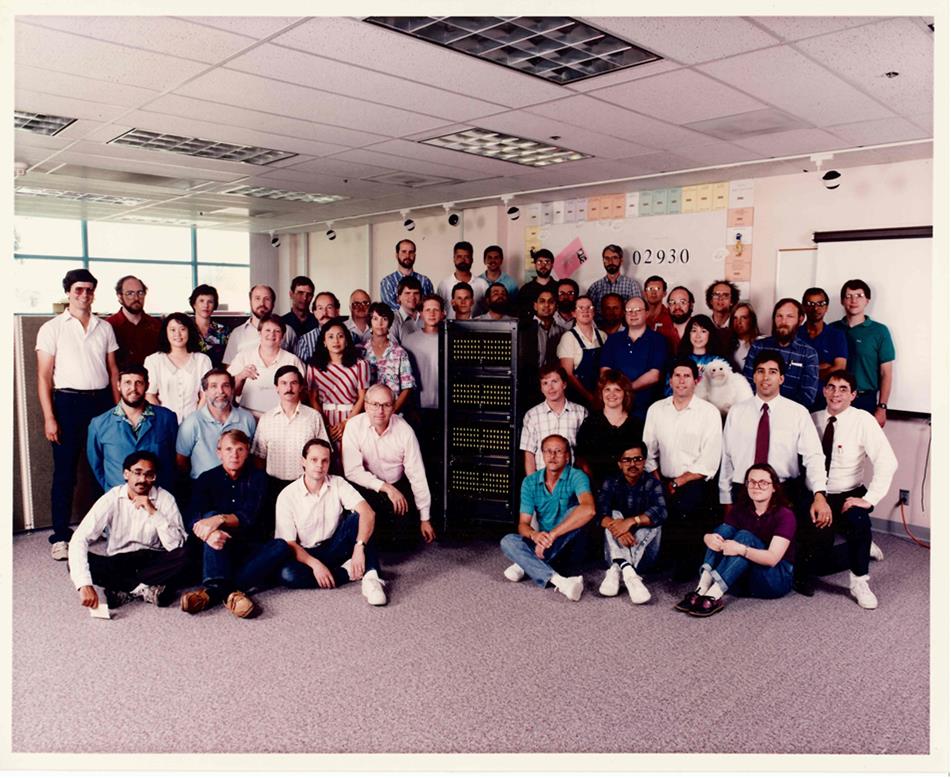You may have heard that Intel has encouraged “long timers” (like me) to consider early retirement. Well, the offer was convincing for me.
After 10,001 days at Intel, it is time for me to start the next phase of my life. I’ve accepted the “ERP offer” (early retirement) with my last day being June 24, 2016 (exactly 10,000 days after my start date). I’ll be in the office as much as needed to help transitions and wrap things up. Let me know if you need/want anything from me as I finish up.
Why 10,001 days at Intel?
The “village” of Intel employees and the many people that I’ve worked with outside Intel, collectively I know of as coworkers and friends, is why I have loved working at Intel all these (27.32) years.
I have been honored to be part of many teams and to have had many roles at Intel. This included being the voice of Intel for parallelism and software tools. I had the privilege to lead, learn from, inspire and be inspired by the world’s best. Of course, it enabled me to literally write novels about the great work we have done together!
I joined Intel in 1989, to work on parallel programming because clock rates had been failing to grow for microprocessors for years. Our project was a VLIW microprocessor called “iWarp” which connected together to form high performance clusters known as systolic arrays. It featured a fully integrated on-die fabric controller with register mapped I/O. Tag-line: “Building Blocks for GigaFlops” (an 8×8 torus, made of 64 iWarp parts, offered 1.2 GFlop/s)
1990 Intel Team Photo with me in it – iWarp Supercomputer Team
I believe this photo was taken in 1990 in Intel building CO4 (Cornell Oaks). Can you spot me? The photo includes a gorilla stand-in for Richard Maliszewski.

A big reason there was no second generation iWarp was that clock rates suddenly started to ramp again. iWarp was 20MHz, faster than the contemporary i486. There was little call for low volume solutions for parallelism when high volume performance was rapidly growing by clock rate (no software changes needed). The Intel i486 ramped from 16MHz to 150MHz, the Intel Pentium started at 60MHz… and the race was on! Parallelism suddenly seemed less important to most.
(Don’t worry – it all works out for parallel programming when clocks stopped rising 15 years later. J)
I’ve had the thrill of shedding blood, sweat, and tears side-by-side with awesome teams to create together:
- the world’s first 1 TeraFLOP/s supercomputer (ASCI Red) world’s fastest computer
- the world’s first 3 TeraFLOP/s supercomputer (ASCI Red upgrade) world’s fastest computer
- the world’s first 1 TeraFLOP/s microprocessor (Knights Corner) powers the world’s fastest computer today
- the world’s first 3 TeraFLOP/s microprocessor (Knights Landing) destined for greatness
(True fact: I like the number ‘3’ – I organize my numismatics around the denomination three)
Today, in 2016, when clock rates had been failing to grow for microprocessors for years, we are offering performance using parallel computing with a many-core microprocessor called “Knights Landing” to build a clusters. Some SKUs offer Omni-Path fabric control on-package integrated on a parallel processor. Déjà vu.
Along the way, I led marketing while we put Intel Software Development tools on the map growing >100X in revenue in less than eight years and building the best software channel for tools on the planet with an ever-growing network of “iStep” events to train developers to modernize code. We also convinced Intel to open source a software product for the first time (TBB). I’ve given countless keynotes, and webinars. And, I’ve written countless blogs, book chapters and authored and edited eight technical books with talented people that I respect and have become my close friends.
The Joys of Engineering
I am an engineer. Engineers solve problems. I have always enjoyed that – whether it is a problem in design, architecture, software, customer support, marketing, press relations or technical writing. Problems to solve. I’ve been blessed to work side-by-side with experts in problem solving of all these types, and am better because of it.
I look forward to watching Intel continue to solve problems for years to come.
I am leaving with great pride in what I’ve done over the years as a member of amazing teams. I have accomplished more than I imagined possible when I started my career, and accumulated many friends in the process. All happening in a fantastic demanding collaborative team environment. I could not ask for more. I have no immediate plans other than to enjoy not traveling (not earning “1K” this year), relaxing, hobbies, low stress, sleeping in, and doting on my wonderful wife. I doubt I will bore of that this year, as I have never been unemployed for even a week, even during school, since my first summer job when I was 16 (and it was a programming job). 🙂 After this year, we’ll see.



























































